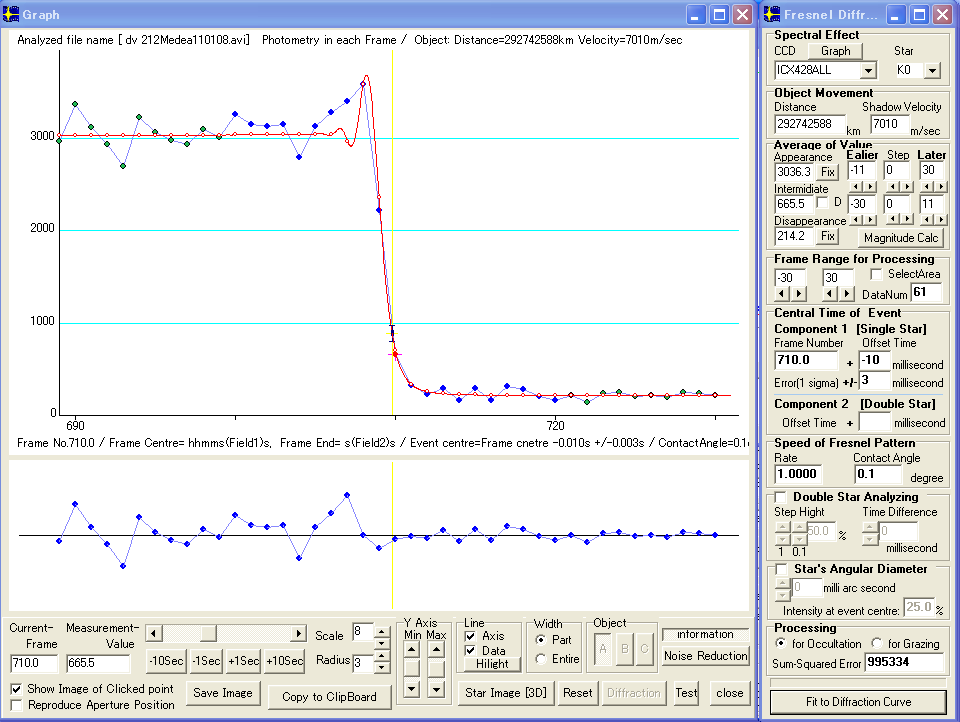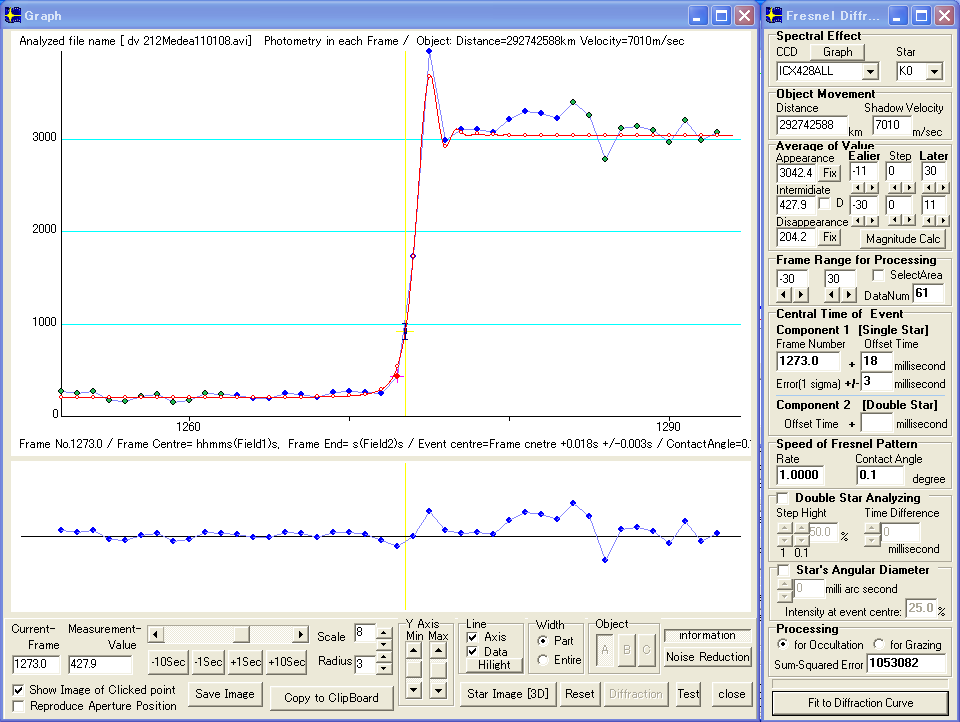Photometric analysis of the TYC 1839-00696-1 occultation by (212)Medea.
Jan. 10 , 2011
Kazuhisa Miyashita
Obsrvation with Non-integrated video
1. Suzuki at Hamamatsu

Event time : Disppearance = 11h48m13.44s +/- 0.03s ; Appearance = 11h48m31.22s +/- 0.03s (UTC)
2. Uchiyama at Owase
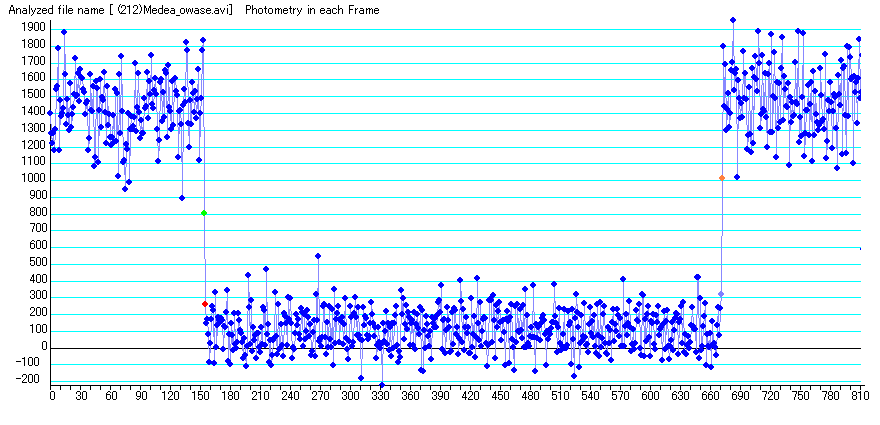
Event time : Disppearance = 11h48m35.48s +/- 0.03s ; Appearance = 11h48m52.74s +/- 0.03s (UTC)
3. Ikari at Moriyama
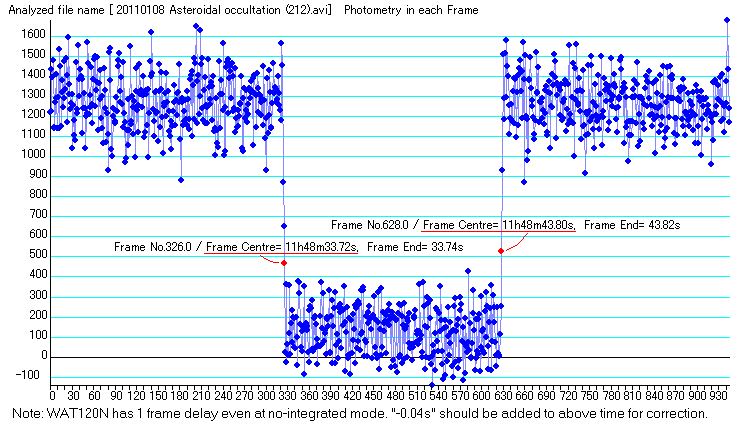
Event time : Disppearance = 11h48m33.68s +/- 0.03s ; Appearance = 11h48m43.76s +/- 0.03s (UTC)
4. Ishida at Taikicho
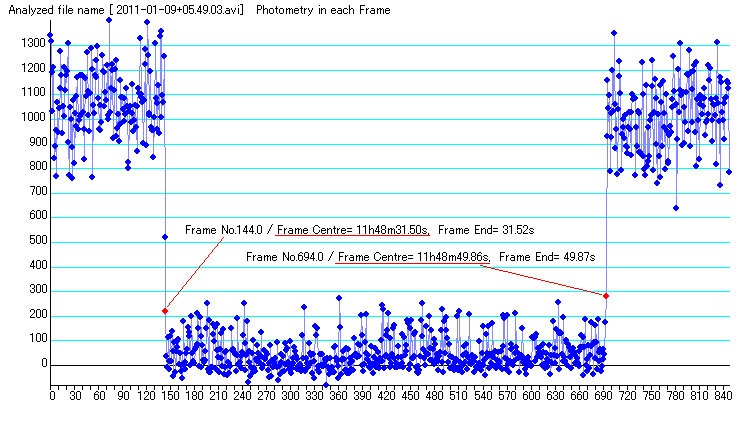
Event time : Disppearance = 11h48m31.50s +/- 0.03s ; Appearance = 11h48m49.86s +/- 0.03s (UTC)
5. Kitazaki at Musashino
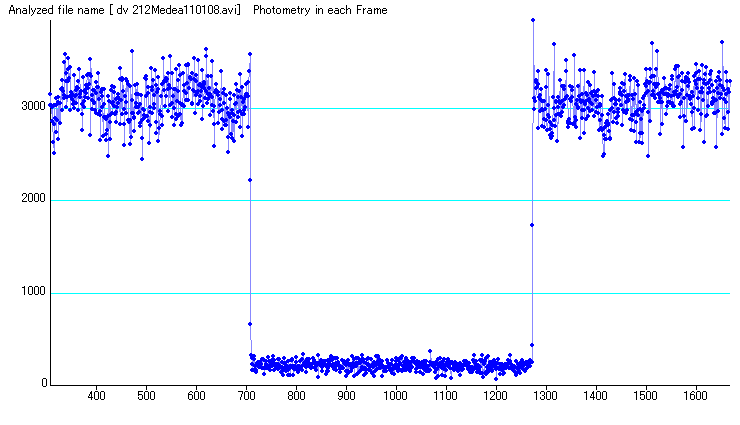
Event time : Disppearance = 11h47m45.49s +/- 0.03s ; Appearance = 11h48m04.31s +/- 0.03s (UTC)
Obsrvation with Integrated video
1. Asai at Hokuseicho, Inabe
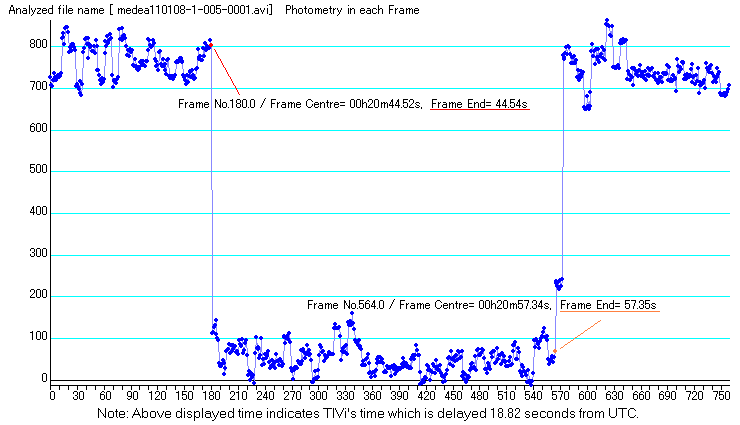
8 frames integration.
Event time : Disppearance = 11h20m25.44s +/- 0.14s ; Appearance = 11h20m38.45s +/- 0.14s (UTC)
Step is due to the appearance of the star in the middle of integrated frame exposure. This is not an aspect of double.
2. Ida at Mihamacho, Mie
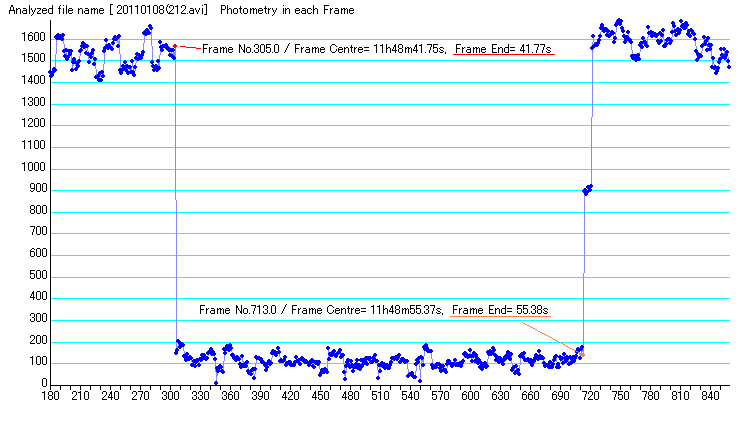
8 frames integration.
Event time : Disppearance = 11h48m41.49s +/- 0.14s ; Appearance = 11h48m55.20s +/- 0.14s (UTC)
Step is due to the appearance of the star in the middle of integrated frame exposure. This is not an aspect of double.
3. Watanabe at Inbencho, Inabe
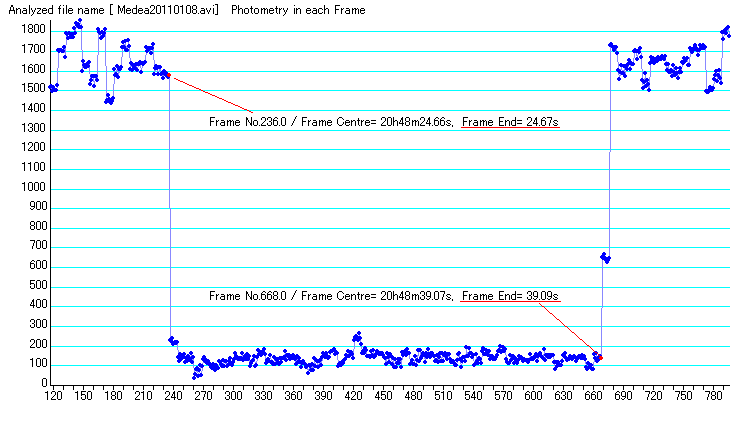
8 frames integration.
Event time : Disppearance = 11h48m24.39s +/- 0.14s ; Appearance = 11h48m38.99s +/- 0.14s (UTC)
Step is due to the appearance of the star in the middle of integrated frame exposure. This is not an aspect of double.
110108_212Medea_Ooba_Takashima_Kashiwa.png
4. Takashima & Ohba at Kashiwa

2 frames integration.
Event time : Disppearance = 11h47m40.31s +/- 0.03s ; Appearance = 11h47m58.91s +/- 0.03s (UTC)
Step is due to the appearance of the star in the middle of integrated frame exposure. This is not an aspect of double.
Calculating the event time.
Below is an example of calculation of event time from integrated video observed by Takashima and Ohba.
----------------------------------------------------------------
Disappearance
From Limovie's light curve.
No. Frame Centre End
477 20h47m40.36s 40.38s ..... The last frame of full brightness.
~~~~~~
To = 20h47m40.38s ..... The base point for this calculation
In the case of disappearance, the event time is given as:
T = To + (f * Hi) / R - C(f)
To : base point obtained as the LAST frame of full bright.
f : number of integrated frame
Hs : height of intermidiate frame(integration) expressed as percent
R : frame rate. =29.97 (NTSC)
C(): delay correction
C(0) = 0.033 seconds
C(1) = 0.042
C(2) = 0.075
C(4) = 0.141
C(8) = 0.275
C(16)= 0.542
C(32)= 1.084
Hence,
T = To + (2 * 0.156) / 29.97 - C(2)
= To + 0.010 - 0.075 = To - 0.065
= 20h47m40.31s +/- 0.03
---------------------------------------------------------------
Appearance
1033 20h47m58.91s 58.93s The last frame of minimum brightness.
~~~~~~
To = 20h47m58.93s
In the case of appearance, the event time is given as:
T = To + (f * (1-Hi)) / R - C(f)
T = To + (2 * (1-0.111)) / 29.97 - C(2)
= To + (2 * 0.889) / 29.97 - C(2)
= To + 0.059 - 0.075 = To - 0.016
= 20h47m58.91s +/- 0.03
---------------------------------------------------------------
Fitting the light change to diffraction simulation
1. Suzuki's observation


2. Ishida's observation
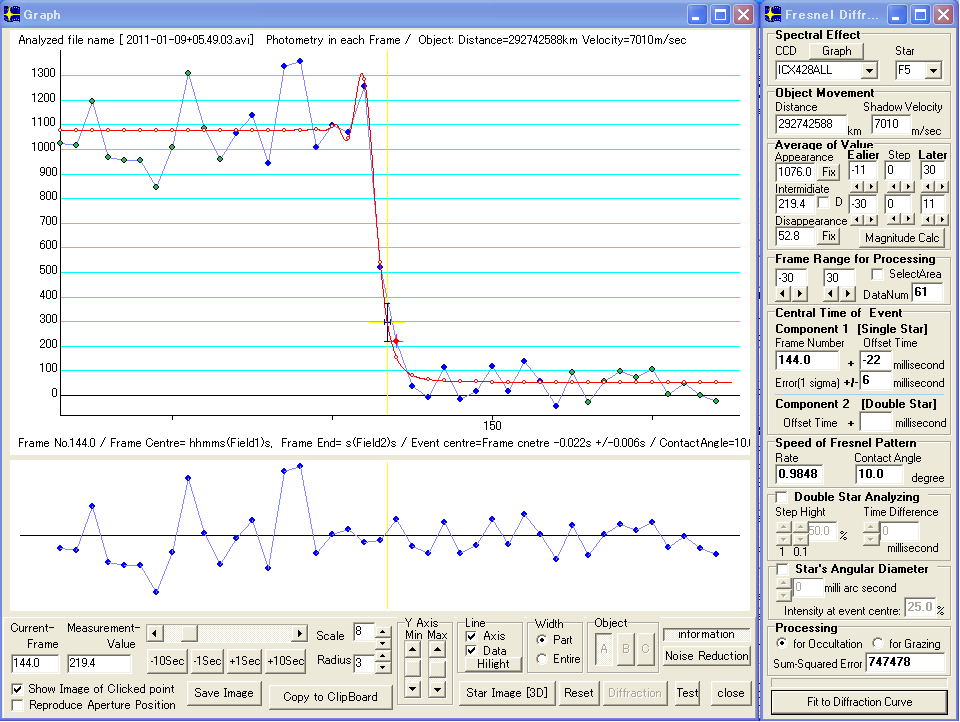

3. Uchiyama's observation
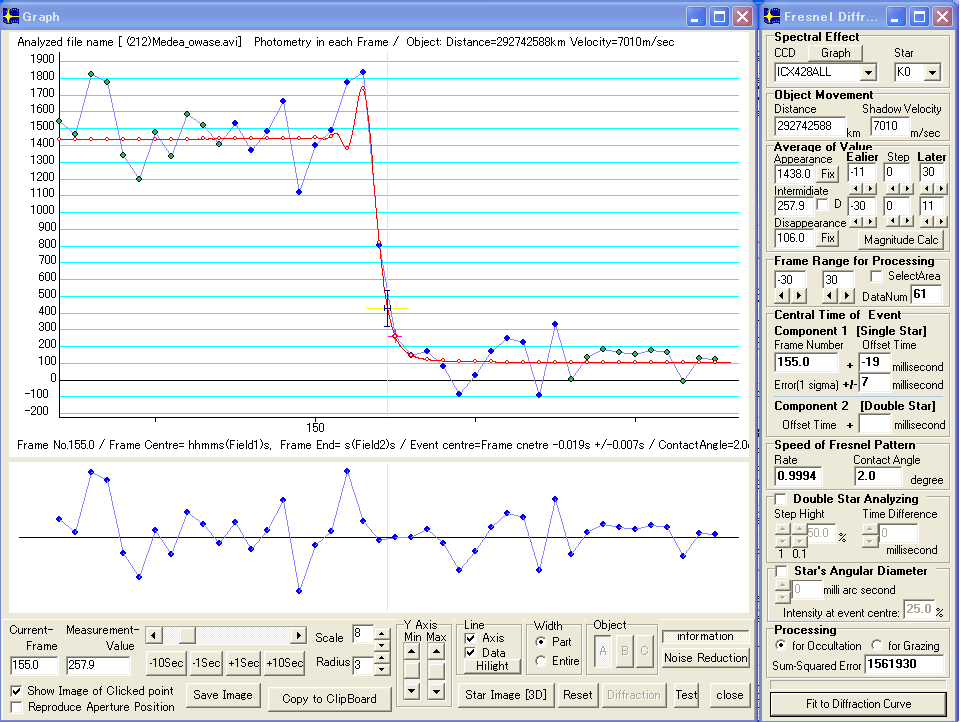
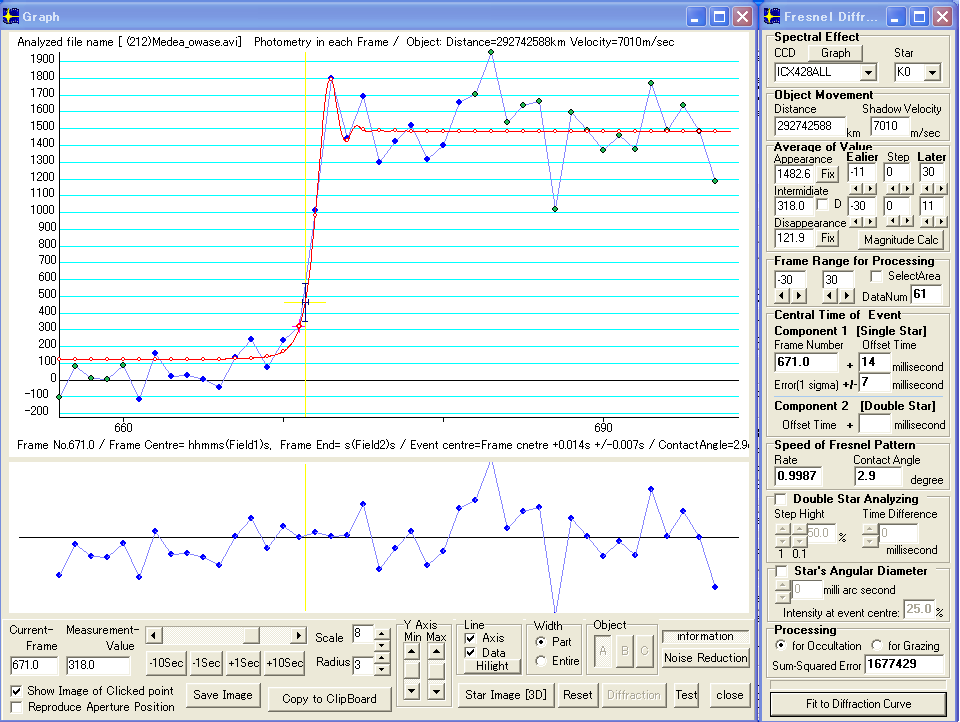
4. Ikari's observation
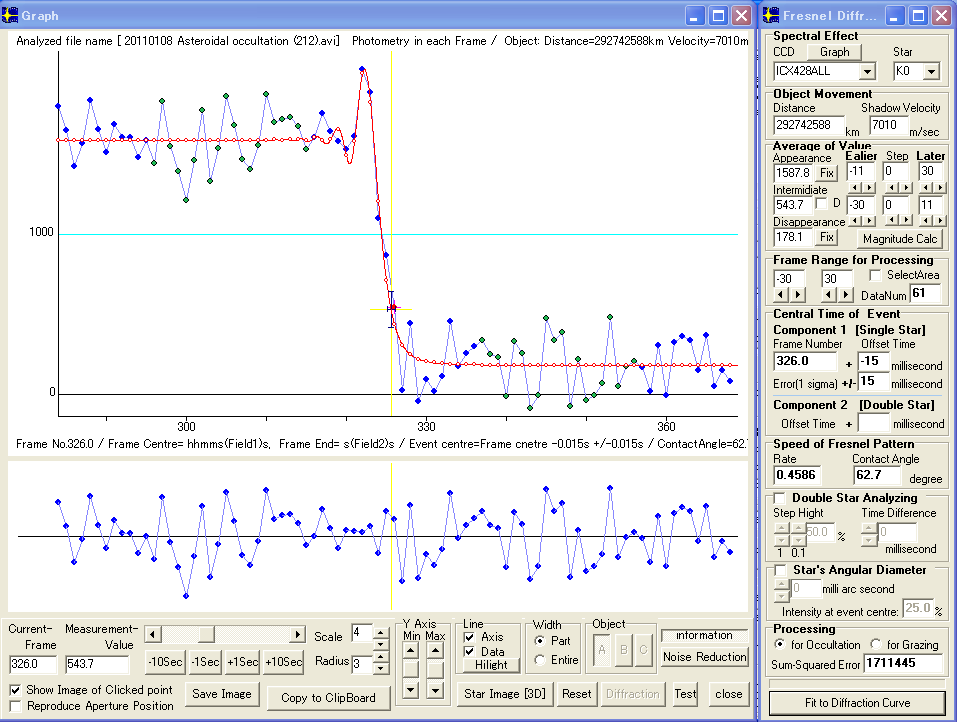

5. Kitazaki's observation
